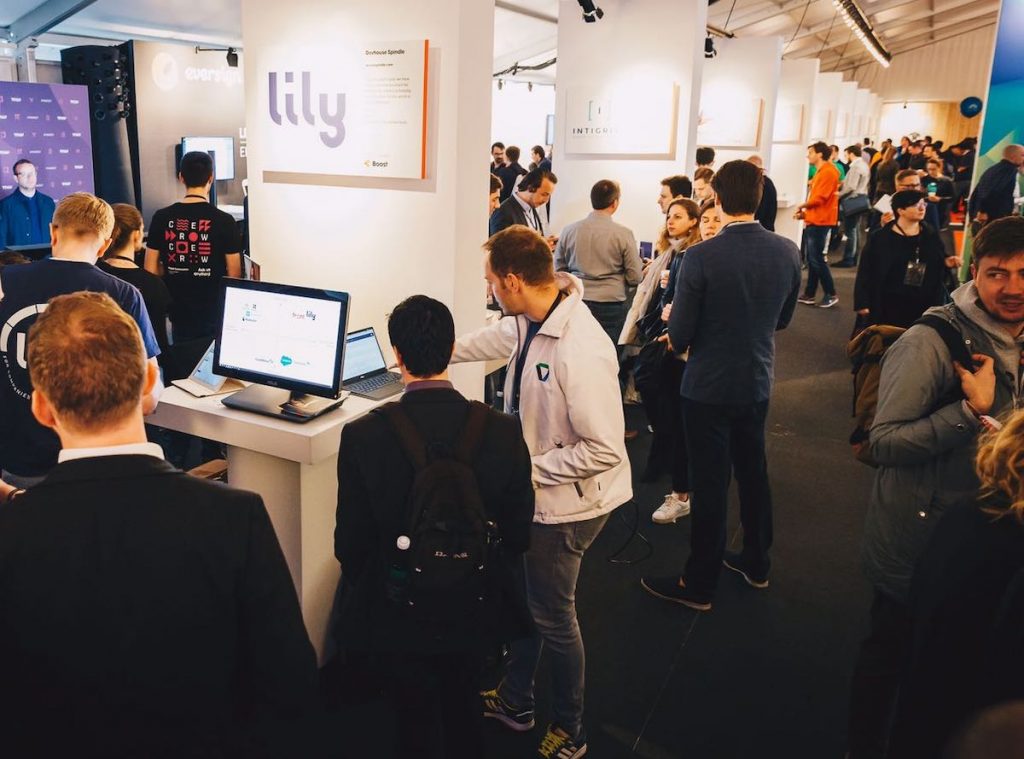My startup failed: the €3 million mistake I will gladly make again
Written by Mark Vletter on 18th December 2019
It’s almost the end of the year and that means it’s time for some reflection. Unfortunately, this year we had to say goodbye to one of our beloved products, a communications tool that we built for teams called Lily. While I’ve learned a lot from the success of my first startup Voys, the failure of this second startup taught me some important lessons too. These are the 9 valuable takeaways from the termination of Lily.
A short history of our products
First, let’s start with a short history. I founded Voys, a company that delivers cloud telephony to SMEs, almost 14 years ago. Voys revolutionized the world of business telephony and grew rapidly from the start. The cloud-based PBX was so successful that we started the company VoIPGRID to distribute the online telephony platform via other partners in 2010. Today, almost 25.000 companies call through our telephony platform. We founded Spindle as the devhouse for developing our VoIP platform and other tools and products.
Besides telephony, there is one other market that has always interested me: the CRM market. A well-used CRM system turns a good company into a great company. In 2012, with the success of Voys in mind, I started Lily: a customer contact system (CRM) that fully and automatically supports companies at all customer contact moments. Now, 7 years and 3 million euros later, we pulled the plug on Lily.
Build the solution for yourself ánd other companies
The idea for Voys was born two years before it was founded. We got to play around with groundbreaking tech at the leading Dutch research institute TNO. Voys made five pivots before we found the right product-market fit: a cloud telephony platform for SMEs.
Initially, we developed this telephony platform for ourselves. We chose to build those functionalities which could take us further. Eventually, it turned out that other companies also needed this and Voys became a success. By building a product that solved a problem for us, we were also able to help other companies. With the same mindset, we started working on our CRM system Lily.
A CRM that is starting to crack
During the first years of our existence we used the CRM system SugarCRM. Sugar worked for us because of three main components:
- All our email was linked to the CRM.
- All communication with the customer was therefore clear and visible to everyone in the company.
- Our telephony platform was linked to it, so we could immediately see who was calling.
But as we grew, Sugar started to crack. It no longer met our needs, and we didn’t find another suitable CRM system that was based entirely on communication either. I think that CRM systems basically all make the same mistake: they are based on manual input. And that’s where it often went wrong: if one colleague doesn’t use it, the system immediately loses its value.
So we build it ourselves: the start of Lily
But what if you create a CRM that fills itself automatically? A CRM that is built on the communication flows within your company and enriches itself with information? A CRM that does the work for you, so you can focus on your customers? The idea for Lily was born.
The primary forms of communication within almost every company are email and telephony. That became Lily’s starting point in 2012. Allard and Cornelis built the basis during their internship: Accounts, Contacts, Deals, and Cases. After that, these features had to be linked to the communication flows. This is where we learned our first lesson:
Lesson 1: Don’t build something that forces your work process on others. Build something that can be adapted to every work process or can be applied to every workflow.
We built a static system from the beginning: ‘these are the fields and you have to make do with them’. But which fields are of importance for an organization or contact person is different for each company.

Working with Lily
Why there are no major revolutions in email
The basis of the CRM system consisted of Accounts, Contacts, Deals, and Cases. In order to fill in these elements, we had to get information, mainly from emails.
Roughly speaking, email consists of two protocols: IMAP (your mailbox) and SMTP (sending an email). We discovered that there is a reason why there have been no major revolutions in this field since Hotmail and Gmail: email is f*cking hard.
The email protocols are old. Very old. The edge cases are numerous. Because we wanted to have all the mail from an organization in Lily automatically, we delved deeply into the email protocols. In the end, this turned out to be the great strength of Lily: all email was automatically collected and centrally available. It also turned out to be the big weakness: it took us two years to build and it was far from perfect.
Because email was so complex, we decided to switch from “all email” to “all mail from Gmail”. In our enthusiasm we made an expensive decision here, as it turned out later. Not only did we choose to read out the mail and information, we also went for synchronizing all mail to our system. That made the product much more complex. Lessons 2 and 3 followed:
Lesson 2: Think about the end result you want to achieve and then work back in the simplest way to achieve that result.
In our case, this should have been reading all the emails and possibly sending it. Not building a fully-fledged new email client.
Lesson 3: Consider the scope of the complexity before building something.
If we had looked fundamentally at what we wanted to build, we would have made different choices. We should have taken the shortest route to Rome and not have fallen into the technique and possibilities.
An email system that really works for organizations
Despite the complexity, we built something extraordinarily beautiful. In Lily you could add your own mailbox and immediately all mail was accessible to everyone. You could share your mailbox as a group mailbox, after which everyone could send and answer mail on behalf of the group mailbox. Moreover, you could share your mailbox with people who could temporarily take over your inbox. This was ideal in case of illness or holidays.
We also built a template module so that you could process your mail quickly. In these templates you could use variables, for example the first name of the customer or your own phone number that would appear automatically in the email. It made mail uniform and the handling of mail extremely fast and pleasant.
We did more things right. We developed Lily entirely on her own APIs, so we could integrate her perfectly into our work processes and other tools we used.
Accounts and Contacts were created almost automatically with third-party APIs and finally we also integrated our telephony. We had built the system we wanted to build. A CRM system that automatically fills itself based on the communication flows in companies. This product had to be just as attractive to other companies!
Going to the market: what is Lily?
Lily became the basis for Voys’ success. Openness, transparency, collaboration, efficiency, integrated work processes and ‘automagic’: it worked great for us. Now it was time to go to the market.
But then we encountered a problem: what exactly was Lily? If we positioned it as a CRM system, we were compared to CRM systems and we found the Cases and Deals features far too limited for that. But for it to be placed in ‘Thé inbox for your company’ realm it did far too much.
We decided to position Lily as an organizational assistant. What Donna was for Harvey Specter in Suits, that was what Lily had to be for everyone in your organization. An assistant who does a lot for you, so you can focus on the most important thing: the customer.
We proudly launched Lily in 2017 at The Next Web Conference in Amsterdam. We got a lot of alpha registrations, but it also became clear that people were expecting some kind of AI-like bot assistant based on our story. We learned our next lesson:
Lesson 4: Wrap a new product category as an existing product but slightly better.
Based on the feedback, we worked on the proposition and slowly started with some marketing campaigns. After the alpha we also got registrations for the beta. Over time, we had already introduced Lily several times, and what turned out to be the case:
Lesson 5: You can safely announce a product several times as new.

Introducing Lily at The Next Web Conference in 2017
A product doesn’t sell itself
In the meantime, the team grew. Now there were about eight people working on the project and the costs in hours also started to increase considerably. And the team – a beautiful club of nerds – had one thing in mind: Lily had to be so cool that it sells itself.
You can guess what went wrong here and quite frankly: this is where I made the biggest mistake.
A product doesn’t sell itself. It probably did in the early days of the internet (Voys), but that time is over. The exception succeeds (Slack), but every other product has a marketing team, a sales team, and a customer success team. Even a product like Slack has that too nowadays. In addition, telephony is necessary for every company. A good CRM system is essential too, but not every entrepreneur sees it that way. This meant that there was even more need to actively enter the market.
Our UX designer followed up on every beta registration, but mainly to learn about how and why they used the product. That UX’er should have been a salesman. In fact: that salesman should have been me. Lily was my invention and I knew everything about the product. And I could also sell such a new product: I had done it before.
Lesson 6: A product doesn’t sell itself, you have to do it.
The step from beta users to paying customers
In the end, more than 600 companies signed up for the beta. Seven became paying customers, two of which were our own companies. The rest made use of the free basic package. We built a beautiful product and we forgot to sell it.
What’s more, we waited too long until we found the product ‘finished’ enough. The group mailbox alone would have been enough to bring Lily to the market. That brings us to lesson 7:
Lesson 7: Scarce resources brings a lot of focus on the customer.
In the early years of Voys, we had to sell in order to have a right to exist. I had given Lily unlimited resources so we could develop indefinitely. For far too long our focus was on supporting Voys and its specific processes and too little on the parties we developed for: companies that want to serve their customers with <3.
Build one brand and use it to your advantage
The Voys brand had become a major player in the telecom market. We thought that as a brand, Lily would be able to scale internationally more quickly. But of course, just like Voys, Lily was a communication product. That could have been done under the same name. In fact, Voys already had teams for support and customer happiness.
Lesson number 8 only became clear to me when I spoke to the CEO of TomTom and asked her: ‘Why don’t you build a new brand for your sports watches?’. Her answer was very simple and I totally missed it: ‘Do you know how expensive and difficult it is to build a brand?’. Thank you for lesson 8 Corinne, you were, of course, absolutely right.
Lesson 8: Use the brand you already have, especially if it fits so well.
The harsh reality: pulling the plug
Meanwhile, Lily started running into a new problem: the costs. To keep the product running, radical upgrades had to be made. Gmail deprecated API’s. Versions of frameworks that we used deserved an update. It would take at least 4 FTE only to maintain the foundation of Lily.
In the meantime, the world hadn’t been sitting still. We saw that other CRM systems were just as far, if not further than we were. And so the Lily team, completely independently, drew the brave conclusion: we have to stop.
We are now in the final phase of phasing out Lily at Voys, Spindle, and VoIPGRID. This makes it painfully clear once again: Lily was very good at a lot of things. And above all, Lily still does a lot of things much better than the CRM systems that are now available. But those CRMs are catching up. And those CRMs are doing other things well.
The Lily team has been very busy facilitating the almost seamless transition. In addition, the team has ‘simply’ added a number of functionalities that we missed and needed to our new CRM system as microservices.
Why Lily was worth it all
The final costs of Lily are estimated at about 3 million euros in people, hours, and other costs. You could easily claim it is the biggest mistake we’ve ever made as a company.
But that would sell it short. Lily taught us a lot. About technology, about product development, about the market and market approach, and that our vision of the world is often quite right.
Above all, however, it has supported us tremendously in the growth that we have experienced at Voys and Spindle. No other CRM could have taken us as far as Lily has taken us. She was way ahead of her time.
Lesson 9: Insight into your communication is the basis for the most successful customer relations.
Lily leaves something behind as well. Already you’re seeing things from Lily in our products. In the smartphone apps, in the new Webphone, and in the VoIP telephony platform itself. Because our biggest lesson has been that insight into communication is the basis of the best customer relations. And that lesson is invaluable.




Your thoughts
No comments so far